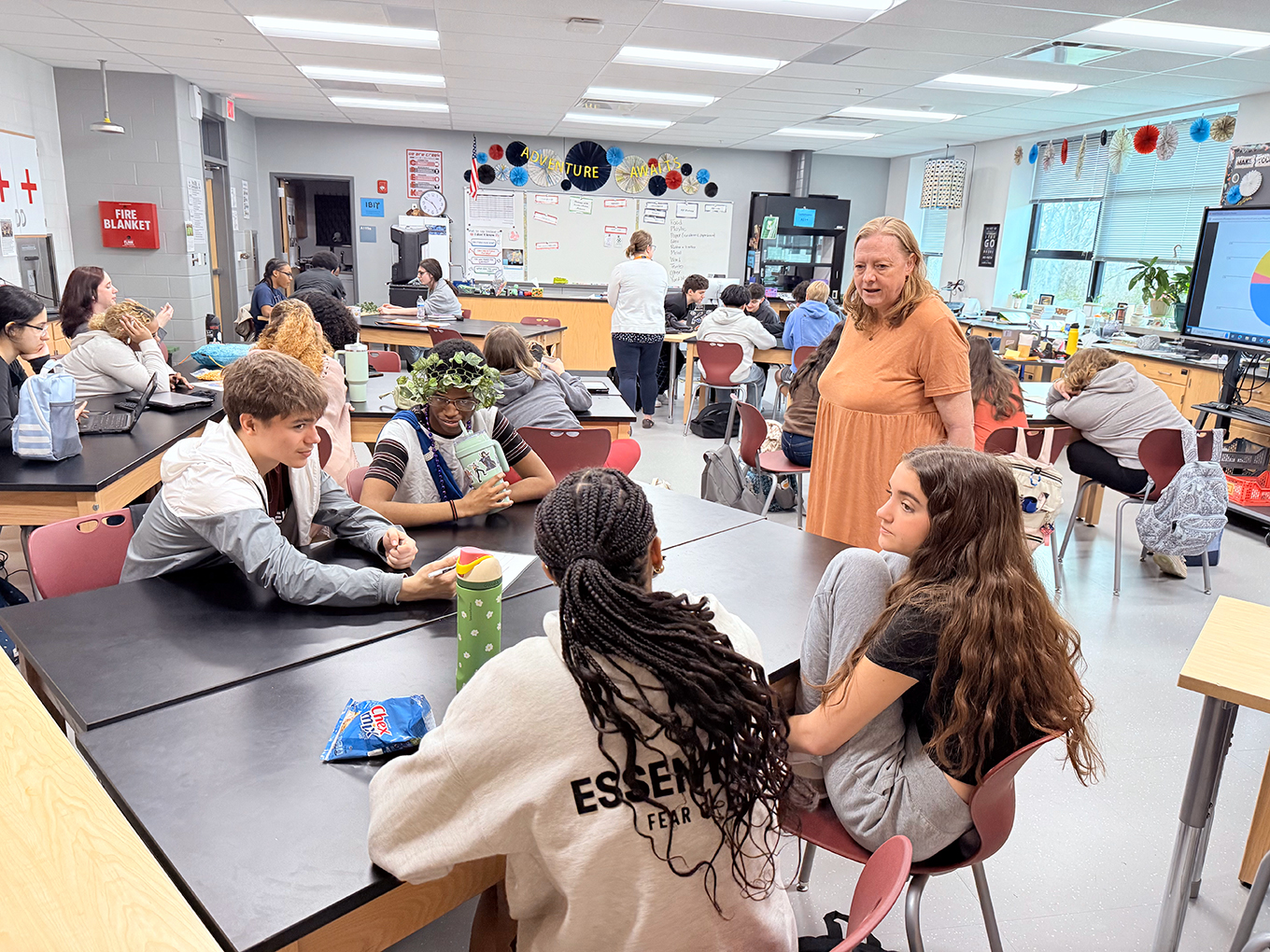
Stacy Crawford Bewley
According to Harvard business professor and New York Times best-selling author John P. Kotter, creating a sense of urgency is the first step to leading change. In “Leading Change,” Kotter writes, “A high rate of urgency does not imply ever-present panic, anxiety, or fear. It means a state in which complacency is virtually absent.”
It’s easy to become complacent in day-to-day school life. Our routines are structured around bell schedules and after-school meetings. We know what works and what doesn’t in our classrooms. Last year’s plans were okay. That’s good enough, right?
By now, I hope you are shaking your head in disagreement. Just as our students change from year to year, we also must change and evolve as educators, honing our skills, perfecting our craft and reflecting on our practices. We simply do not have time for complacency. Regardless of what we’ve done in the past – even if it worked – we have to keep learning and growing in order to move our students forward.
Ultimately, we should keep students’ transitional end game in mind. What goals have our students set? Are we working intentionally to help them reach those goals? This is especially true when we are talking about our students with disabilities.
In a world full of folks professing to be living their best lives, evaluate these possible outcomes for students with disabilities, as reported by the Institute of Educational Science in a longitudinal transition study. Consider beginning each of the following with “Living my best life …”
- Having a lower GPA than my peers.
- Working in a low-skill, low-wage job.
- But still not living on my own.
- Wishing I could understand what I read.
Are these the outcomes you want for your students? How about for the children you love? No? Of course not! It is time for urgency.
No matter what grade or subject we teach, our time with students is short. To optimize that time, we need to become masterful in the implementation and monitoring of evidence-based practices. For students with disabilities, we have to do even more to accelerate their learning. We need to do what works. One proven way is to intentionally incorporate explicit instruction (EI).
In “Explicit Instruction and Efficient Teaching,” Anita Archer and Charles Hughes establish 16 elements of explicit instruction:
- Element 1: Focus instruction on critical content
- Element 2: Sequence skills logically
- Element 3: Break down complex skills and strategies into smaller instructional units
- Element 4: Design organized and focused lessons
- Element 5: Begin lessons with a clear statement of the lesson’s goals
- Element 6: Review prior skills and knowledge before beginning instruction
- Element 7: Provide step-by-step demonstrations
- Element 8: Use clear and concise language
- Element 9: Provide an adequate range of examples and non-examples
- Element 10: Provide guided and supported practice
- Element 11: Require frequent responses
- Element 12: Monitor student performance closely
- Element 13: Provide immediate affirmative and corrective feedback
- Element 14: Deliver the lesson at a brisk pace
- Element 15: Help students organize knowledge
- Element 16: Provide distributed and cumulative practice
Archer and Hughes include the following suggestions for what EI should look like in the classroom:
- Clear Learning Targets: Students understand and can explain the focus of the lesson. The learning target is clearly tied to the standard.
- Activated Prior Knowledge: Students are making connections with previous learning and teachers are assessing readiness.
- Think-Alouds and Modeling: Show students your thinking as you solve a problem, analyze a writer’s point of view or sort evidence. In my own classroom, modeling the writing process showed my students that it is okay to make mistakes and revisions. Being transparent with my writing helped make our classroom environment a safe place to learn.
- Frequent, Varied Opportunities to Respond: Higher rates of opportunities to respond positively impact student engagement and provide teachers with constant assessment data. Opportunities to respond can include:
- Verbal responses through communication with the teacher or peers;
- Written responses in the form of paper and pencil tasks, whiteboard answers or technology responses: and
- Physical responses such as choosing a side of a debate by going to one side of the room, self-ratings from 1-5 on understanding of content or agree/disagree responses.
- Logically Sequenced Learning: It is vital to ensure that we have sequenced the learning in a way that makes sense to our student For example, we might begin with teaching the easiest skills first and move toward the most complex. We might also teach the skills students will access most frequently before focusing on skills students will use less often.
- Appropriate Pacing: Teacher should constantly monitor and respond to student needs, both by scaffolded instruction and with accelerated learning opportunities. Appropriate pacing also includes what education consultant and author Mike Rutherford refers to as neural downshifting, which is the ability of the teacher to reduce stress and threat in the classroom environment to avoid “survival mode” thinking and to increase higher-order thinking.
EI is well-established with a 40 year foundation of research and is included in the Council for Exceptional Children and CEEDAR’s High-Leverage Practices. According to “What Really Works with Exceptional Learners,” implementing EI practices increases teacher clarity and supports student engagement through the use of frequent opportunities to respond, purposeful practice and meaningful feedback.
You already may have incorporated some of the explicit instruction elements in your classroom. What if you were intentional about incorporating more? For me, training myself to view every lesson through the eyes of my students was a turning point in my teaching. I knew what I wanted them to learn, but if my learning targets weren’t clear, how would they know? Using pre-assessment data to determine our starting points helped me gauge the level of background knowledge my students had and guided our work going forward.
While all 16 EI elements are important, I personally saw more positive changes in my classroom as I learned to give students more opportunities to respond. It didn’t happen overnight and at first it felt forced and almost contrived. But the truth is, students need the chance to interact with the content, not just be in the room with it.
Ask yourself who is doing the talking in your lessons. Is it just you? Are you only calling on students who raise their hands? What other ways could you provide your students opportunities to engage with the content? Increasing these opportunities provides us with valuable data that we can use to inform instruction.
Let’s return to Kotter’s quote. “… Complacency is virtually absent.” What would your classroom look like without complacency? What would it sound like? Can you imagine the changes in student learning?
Stacy Crawford Bewley is a special education instructional coach with Bullitt County Public Schools. She is a former high school special education teacher with 13 years of classroom experience. Bewley taught English and reading in both the resource and collaborative settings. Prior to her teaching career, she served as a state social worker for more than 10 years. She is a fellow of the Louisville Writing Project and is a doctoral candidate at the University of Louisville.




Leave A Comment